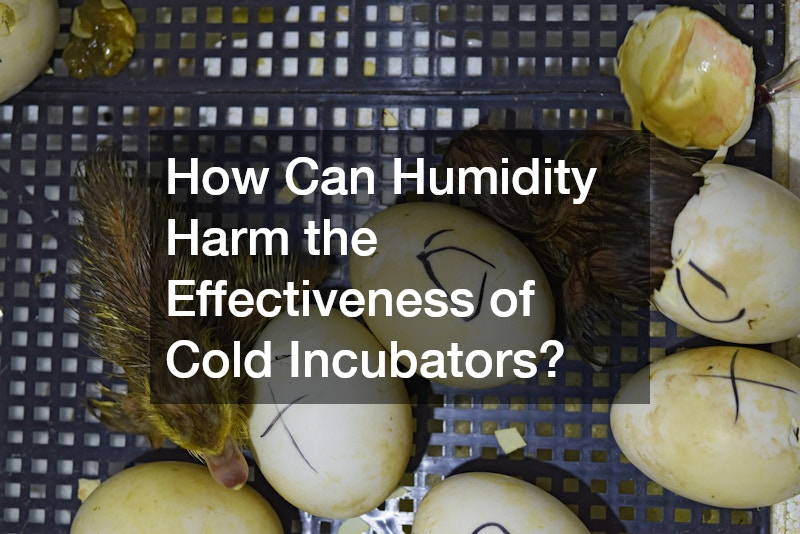Disclaimer: Concordia Research. This site provides general content for informational purposes only.
Cold incubators, essential tools in laboratories, hospitals, and industrial settings, are designed to maintain a stable, controlled environment to promote the optimal growth of cells, preservation of biological samples, and stability of chemical compounds. They are often used in research, medical diagnostics, pharmaceutical production, and food storage. However, while temperature control is the primary focus of these devices, humidity also plays a crucial role in ensuring their effectiveness.
When humidity levels fluctuate or become too high, they can severely affect the performance of cold incubators, leading to compromised sample integrity, equipment malfunctions, and unreliable results.
1. Impact on Sample Integrity and Preservation
One of the most significant ways in which excessive humidity can affect cold incubators is by compromising the integrity of biological samples. Cold incubators are frequently used for storing samples such as DNA, RNA, proteins, and tissues, all of which require a specific environmental balance to remain viable. Many of these samples are highly sensitive to fluctuations in both temperature and humidity.
High humidity levels inside a cold incubator can cause condensation to form on the surfaces of containers or equipment. This moisture can lead to the degradation of sensitive samples, such as the formation of ice crystals in biological materials or the hydrolysis of proteins and other compounds. Additionally, some materials, such as agar plates or culture media, may absorb excess moisture, altering their composition or affecting microbial growth conditions. In cases where biological materials are being stored for long periods, such as sperm or embryos, the presence of excess moisture can lead to freeze-thaw cycles that ruin the quality of the samples, making them unsuitable for later use.
2. Corrosion and Equipment Damage
Cold incubators are made of metal and other materials that are prone to corrosion when exposed to excessive moisture over time. The accumulation of water droplets inside the incubator can lead to rusting or deterioration of components such as shelves, racks, and internal parts of the cooling system. In more severe cases, prolonged exposure to high humidity can damage the incubator’s internal electronic systems, including the temperature and humidity sensors, motors, and fans. If corrosion occurs on these critical components, it can cause malfunctions, rendering the incubator ineffective or leading to costly repairs.
In addition to rust, humidity can also cause the growth of mold and mildew, which can not only degrade the incubator’s materials but also pose a serious health risk. Mold spores can contaminate biological samples, rendering them unsafe for research or medical purposes. A well-maintained incubator must, therefore, maintain precise control over both temperature and humidity to avoid these damaging effects.
3. Effect on Temperature Stability
Humidity and temperature are closely related variables in a cold incubator, and a fluctuation in one can lead to disturbances in the other. For example, excessive humidity can cause the temperature inside the incubator to become unstable. When moisture accumulates inside the unit, it can absorb heat energy, resulting in fluctuations in the overall temperature. This is particularly problematic for incubators used in research and medical applications where temperature stability is critical for maintaining sample viability.
In some cases, when an incubator’s cooling system works harder to counteract the heat absorbed by excess moisture, the compressor and cooling components may become overburdened. This can lead to inefficient cooling, temperature overshooting, or even failure of the system. For incubators storing temperature-sensitive samples, such as vaccines or biologic reagents, even small deviations from the required temperature range can render the samples unusable.
4. Condensation and Freezing Issues
One of the most common signs of high humidity in a cold incubator is the formation of condensation on internal surfaces. This occurs when warm, moist air inside the incubator comes into contact with cold surfaces, causing the water vapor to cool and condense into liquid droplets. In some cases, this moisture can freeze, particularly if the incubator operates at subzero temperatures.
When condensation forms on the walls, shelves, or interior glass panels of the incubator, it can lead to the aforementioned issues, such as sample degradation or equipment corrosion. Moreover, when condensation freezes, it can block airflow, hindering the cooling system’s ability to maintain an even temperature. This can result in uneven cooling and hot spots that compromise the integrity of the stored materials.
5. Operational and Maintenance Challenges
Maintaining the appropriate humidity level inside a cold incubator can be challenging without the right monitoring tools and controls. While many modern incubators come equipped with sensors and humidity control systems, problems can arise if these systems are not regularly calibrated or maintained. An improperly functioning humidity sensor may give inaccurate readings, leading to incorrect adjustments in the incubator’s settings. Without proper humidity control, the incubator may become either too dry or too humid, putting the stored materials at risk.
In environments where high humidity is a persistent problem, such as laboratories located in tropical climates or humid industrial settings, additional dehumidification systems or humidity control units may be necessary to maintain optimal conditions. However, the cost of such systems can be substantial, and without regular maintenance, these units may also fail to maintain stable humidity levels, further exacerbating the problem.
Conclusion
Researchers, healthcare professionals, and industrial users who rely on cold incubators must be vigilant in maintaining the right environmental conditions. By ensuring that both temperature and humidity are properly controlled, users can safeguard the integrity of their samples and ensure the longevity and reliability of their incubator equipment.
.




